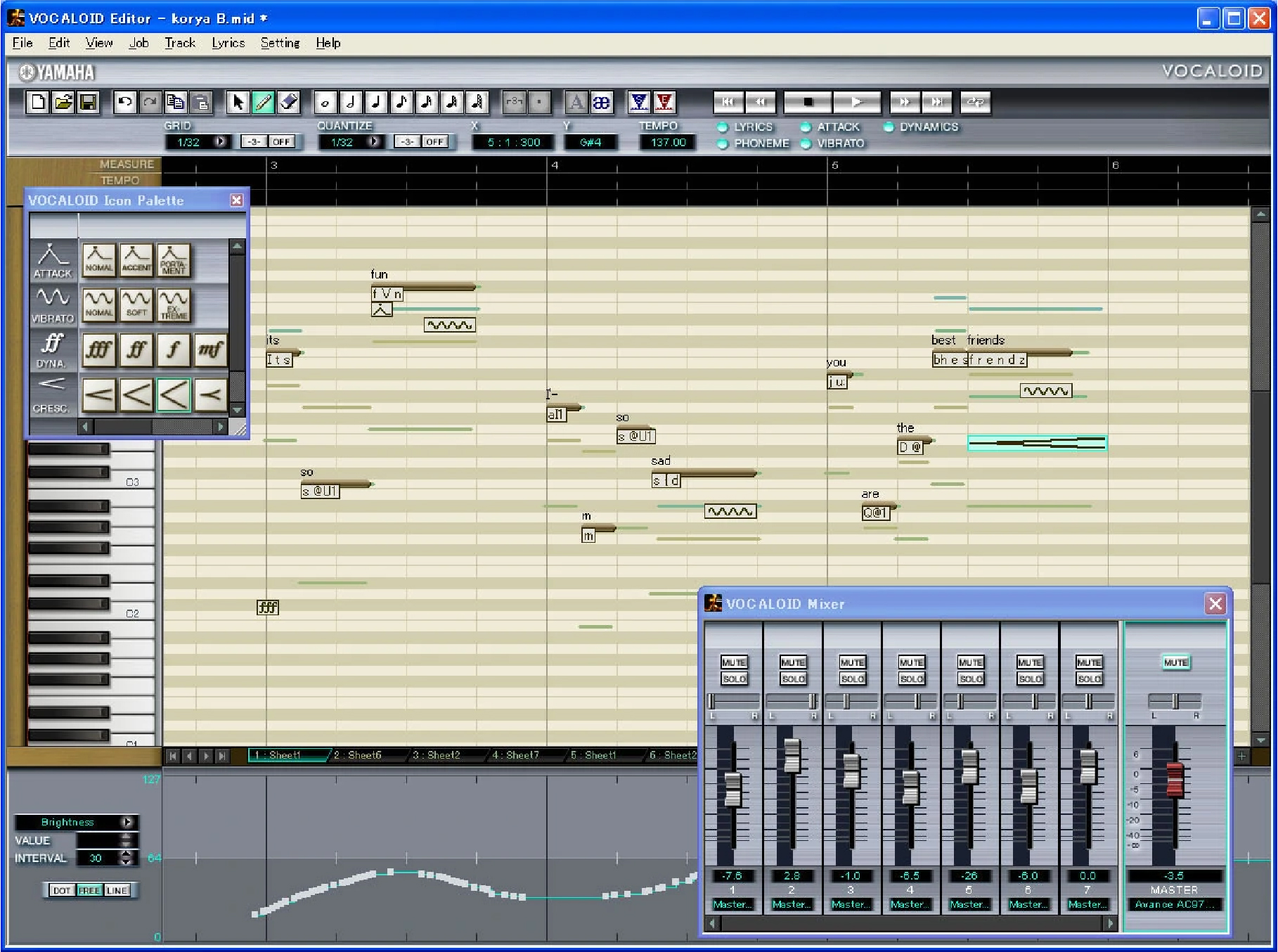Vocaloid Wiki
About the Software
Vocaloid (ボーカロイド, Bōkaroido) is a singing voice synthesizer software product. Its signal processing part was developed through a joint research project led by Kenmochi Hideki at the Pompeu Fabra University in Barcelona, Spain, in 2000 and was not originally intended to be a full commercial project.[1] Backed by the Yamaha Corporation, it developed the software into the commercial product "Vocaloid" that was released in 2004.
The software enables users to synthesize "singing" by typing in lyrics and melody and also "speech" by typing in the script of the required words. It uses synthesizing technology with specially recorded vocals of voice actors or singers. To create a song, the user must input the melody and lyrics. A piano roll type interface is used to input the melody and the lyrics can be entered on each note. The software can change the stress of the pronunciations, add effects such as vibrato, or change the dynamics and tone of the voice.
The Vocaloid software had a great influence on the development of the freeware UTAU. Several products were produced for the Macne series (Mac音シリーズ) for intended use for the programs Reason 4 and GarageBand. These products were sold by Act2 and by converting their file format, were able to also work with the UTAU program. The program Maidloid, developed for the character Acme Iku (阿久女イク), was also developed, which works in a similar way to Vocaloid, except produces erotic sounds rather than an actual singing voice. Other than Vocaloid, AH Software also developed Tsukuyomi Ai and Shouta for the software Voiceroid, and the sale of their Vocaloids gave AH software the chance to promote Voiceroid at the same time. The software is aimed for speaking rather than singing. Both AH Software's Vocaloids and Voiceroids went on sale on December 4, 2009. Crypton Future Media has been reported to openly welcome these additional software developments as it expands the market for synthesized voices.

